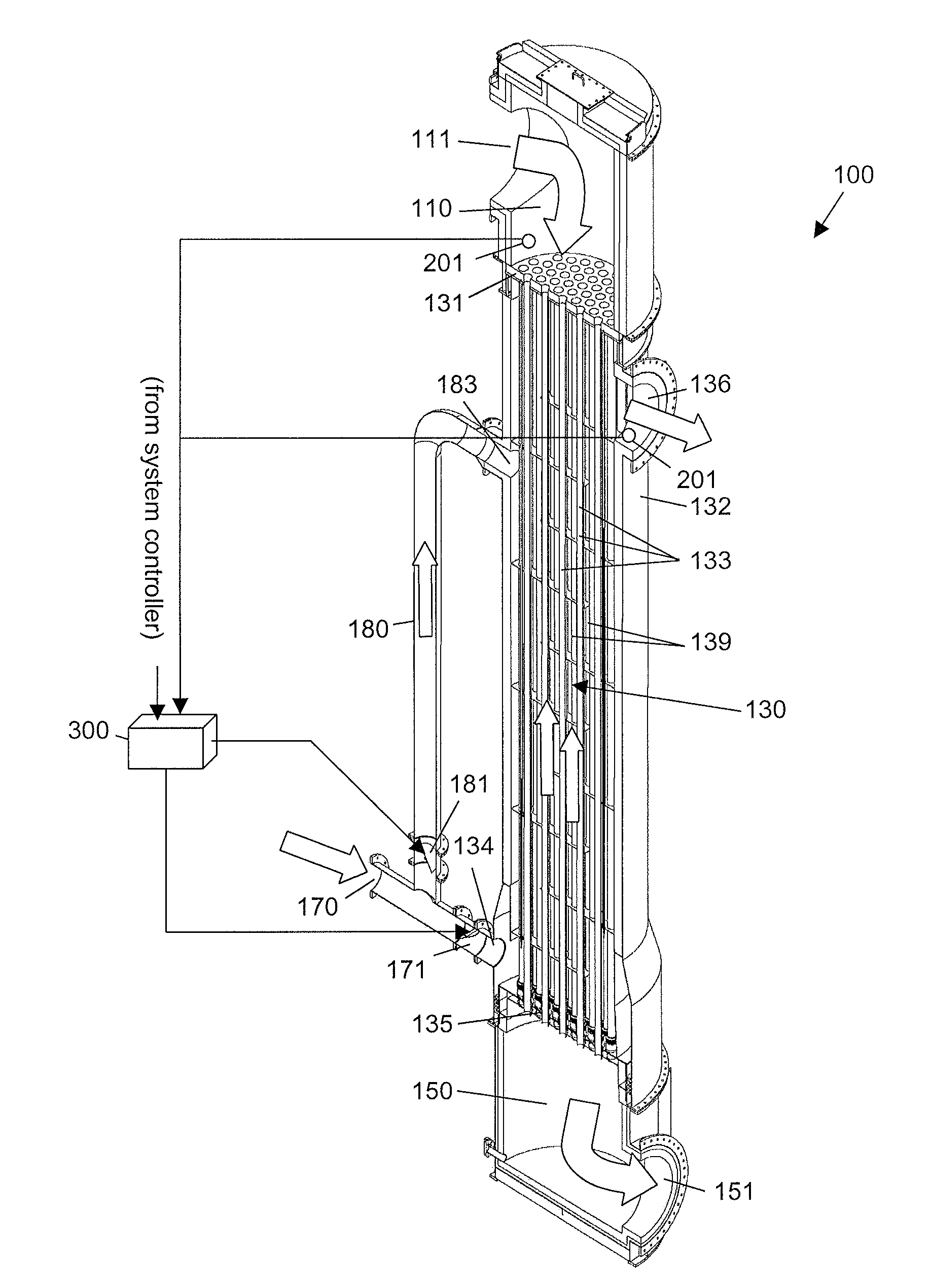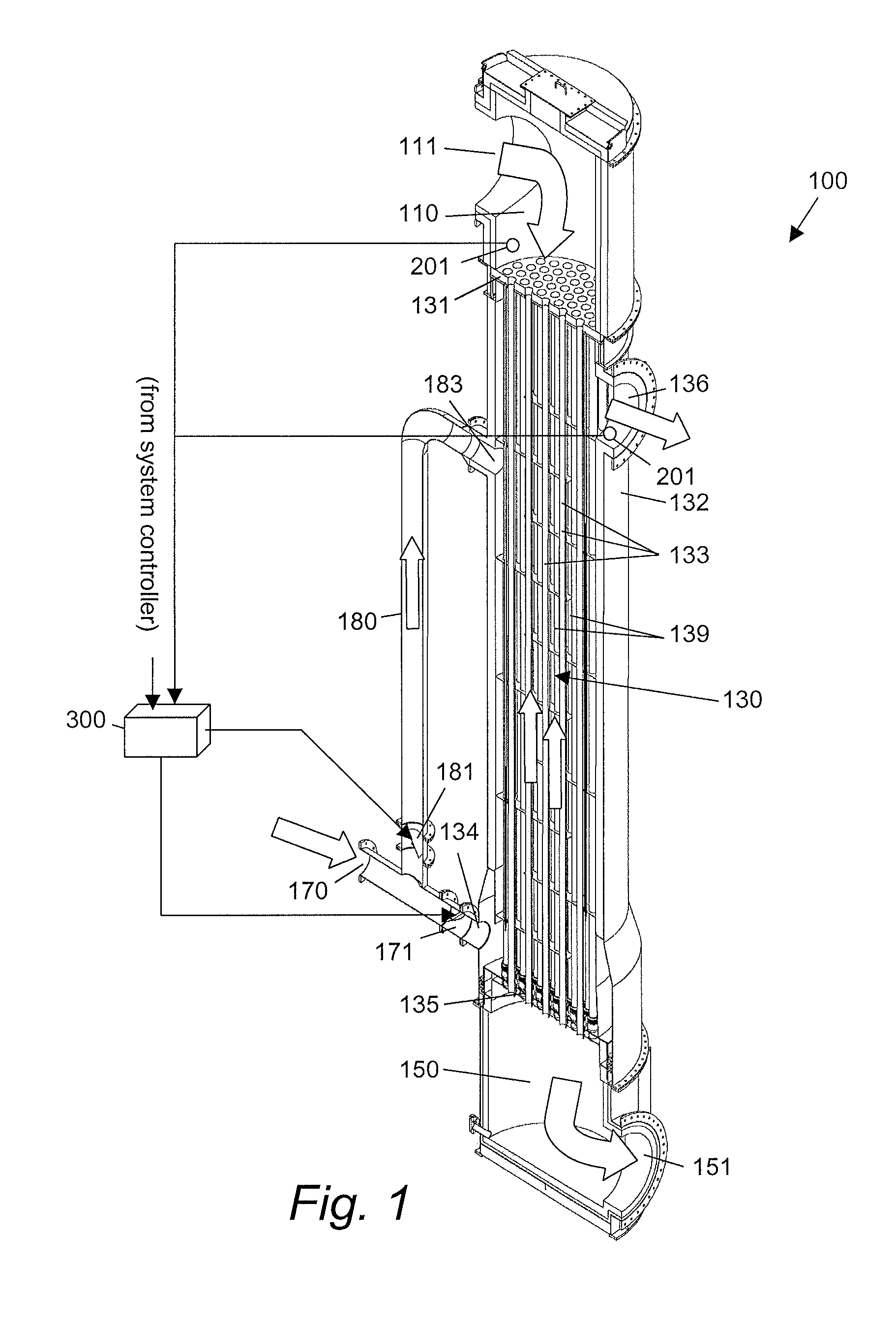Adjustable heat exchanger
- Summary
- Abstract
- Description
- Claims
- Application Information
AI Technical Summary
Benefits of technology
Problems solved by technology
Method used
Image
Examples
Embodiment Construction
As described above, conventional heat exchangers adjust transfer fluid temperature by changing flow rate of either the first or transfer fluid. This can reduce efficiency. For example, if the hot working fluid is a flue gas stream from a furnace and the cold transfer fluid is an air stream intended to be routed into the combustion chamber of the furnace, adjusting the temperature by controlling the flow of flue gas or of combustion air causes a less than optimum performance of the furnace. There is a defined amount of flue gas produced, and a defined optimum amount of combustion air used.
The means to minimize overheating of the heat exchanger is by employing an interstage bypass of the heated transfer section of the heat exchanger. A portion of the cool transfer fluid inlet stream is allowed to bypass a section of the heat exchanger, and then it is re-introduced into an upper section of the heat exchanger. By this means there is full flow of the transfer fluid over the hottest end o...
PUM
 Login to View More
Login to View More Abstract
Description
Claims
Application Information
 Login to View More
Login to View More - Generate Ideas
- Intellectual Property
- Life Sciences
- Materials
- Tech Scout
- Unparalleled Data Quality
- Higher Quality Content
- 60% Fewer Hallucinations
Browse by: Latest US Patents, China's latest patents, Technical Efficacy Thesaurus, Application Domain, Technology Topic, Popular Technical Reports.
© 2025 PatSnap. All rights reserved.Legal|Privacy policy|Modern Slavery Act Transparency Statement|Sitemap|About US| Contact US: help@patsnap.com


